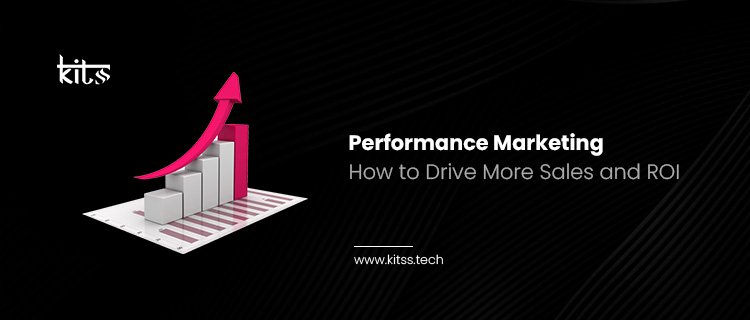Are you tired of spending money on advertising campaigns that don’t achieve the desired results? You’re not alone. 60% of marketers consider wasted ad spend as their biggest challenge. That’s where performance marketing comes in.
It’s all about paying for the actual results you get rather than just paying for exposure. It means you only pay for actions that align with your marketing objectives, such as clicks, impressions, leads, or sales. But how do you measure those actions? That’s where tracking and analytics come in. You can measure and optimize your campaigns in real-time to achieve better results.
In this blog post, we’ll dive deeper into performance marketing, its benefits, and how you can implement it for your business.What is Performance Marketing?
Performance marketing is a strategy that focuses on achieving specific, measurable results. Instead of paying for ad impressions or clicks, advertisers only pay when a desired action is completed, such as a sale, lead, or download. It makes it a cost-effective, data-driven approach to online marketing.
Key Components of Performance Marketing
To succeed in performance marketing, advertisers need to optimize their campaigns using key performance indicators (KPIs) like conversion rates, cost-per-acquisition (CPA), and return on ad spend (ROAS). These metrics help monitor campaign performance, enabling data-based decision-making and improvements.
A Real-Life Example
Let’s imagine you own an online store selling eco-friendly products. You decide to launch a performance marketing campaign to boost sales. You partner with an affiliate network, where publishers promote your products on their websites, social media platforms, or blogs. For every sale generated through a publisher’s referral, you pay them a commission. This way, you only spend money when a successful conversion happens, ensuring a higher return on investment (ROI) and effective use of your advertising budget.
Why go for Performance Marketing?
Better ROI
With performance marketing, you only pay for the actions you want, such as a click or a conversion. It means you can easily calculate your return on investment and optimize your campaigns accordingly. You’re not wasting your budget on ineffective ads or impressions that don’t convert.
Precise Targeting
Performance marketing allows you to target specific audiences with precision. You can use data to identify the most relevant audience for your product or service and then target them with personalized messaging.
Data-Driven Optimization
Performance marketing is all about data. You can measure everything from click-through rates to conversion rates and use this data to optimize your campaigns in real time.
Increased Transparency
It provides more transparency than traditional advertising. You can see exactly how much you’re spending, where your ads are being shown, and what actions are being taken.
Who can Benefit from Performance Marketing?
- Small & Medium-Sized Businesses: Budget-friendly, pay-only-for-results approach.
- E-commerce Stores: Boost sales, and attract potential customers.
- App Developers: Target the right audience, and increase app downloads.
- Affiliate Marketers: Fair commission-based revenue model.
- Non-Profits: Optimize campaigns for donations, sign-ups, and more.
How does Performance Marketing Work?
Let’s break it down step-by-step.
Step 1: Setting Clear Goals
First, advertisers need to establish their objectives. Whether it’s generating leads, increasing sales, or driving app downloads, having a clear goal is essential for campaign success.
Step 2: Choosing the Right Platform
Next, advertisers select the best platforms for their campaigns. Depending on the target audience and desired action, options could include search engines, social media, or affiliate networks.
Step 3: Crafting Engaging Creatives
It’s time to create eye-catching ads that resonate with the target audience. Great copy, visuals, and calls to action are crucial for driving conversions.
Step 4: Tracking and Optimization
As the campaign runs, advertisers monitor performance using KPIs such as conversion rates and CPA. This data allows them to tweak their ads, targeting, or bidding strategies for continuous improvement.
Step 5: Paying for Results
Finally, the beauty of performance marketing comes into play: advertisers only pay for the results they achieve, like sales, sign-ups, or downloads. This ensures more efficient use of marketing budgets and a higher ROI.
Conclusion
Performance marketing is a versatile strategy that benefits various businesses and organizations. From small enterprises to non-profits, it’s a game-changer for anyone looking to maximize their marketing ROI and achieve specific goals.
Whether you’re a marketer or a business owner, data-driven is the new normal.


